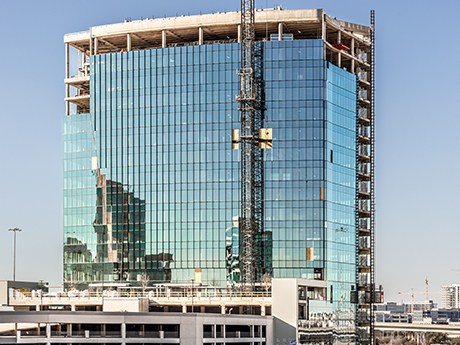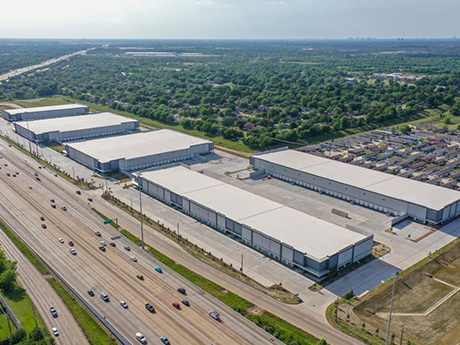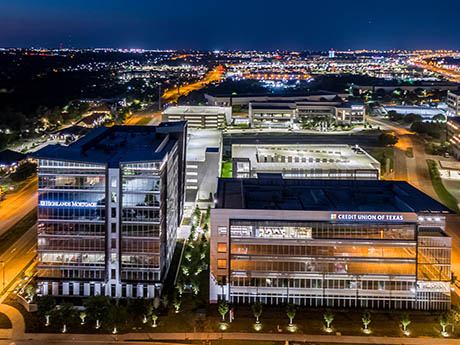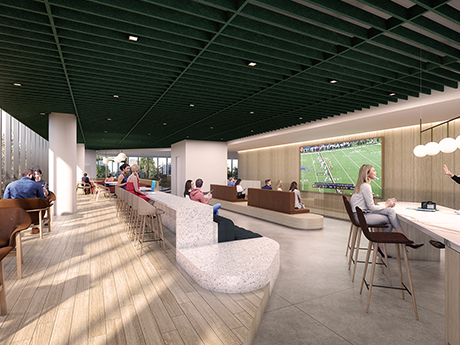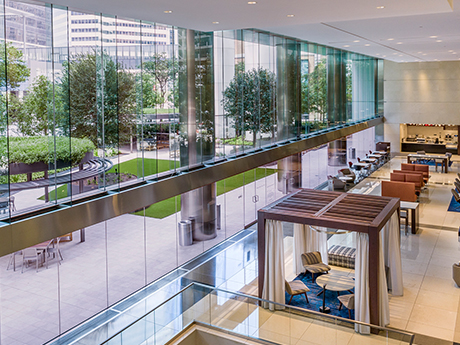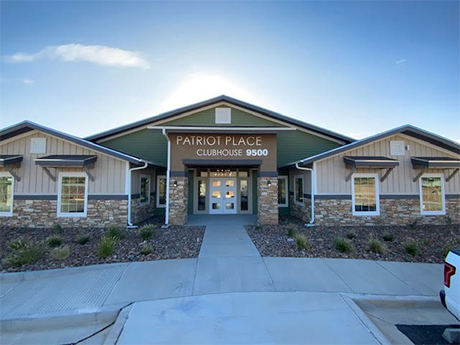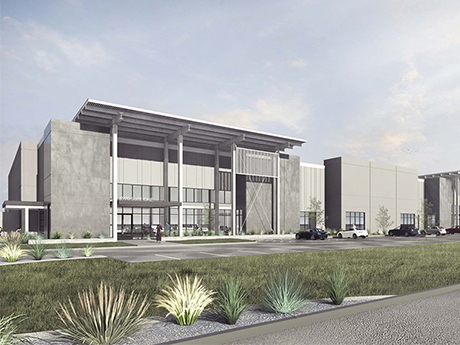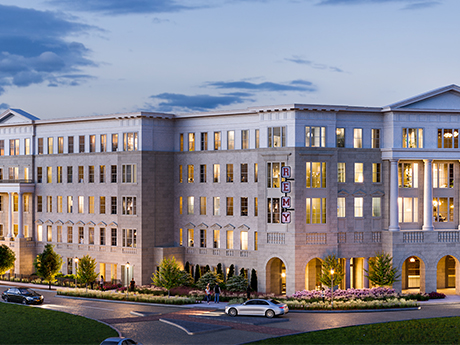By Eric Barnes, director of business development at SiteAware Texas has been one of the most attractive states for corporate relocations and sustained construction growth, spurred on by attractive tax benefits, a low cost of living and business-friendly policies. As such, Texas remains well-positioned for a robust and profitable construction economy heading into 2023. According to The Wall Street Journal, Texas cities rank among the fastest-growing in the country in terms of population. This strong population growth, coupled with a robust job market and strategic location, continues to attract employers. In 2021, the state saw a record number of headquarters relocations. Though that figure dipped in 2022 due to the conclusion of state-sponsored tax breaks, the local market remains healthy and attractive to developers and investors. In addition, the slowing down of relocations isn’t necessarily bad because it allows the state to ensure the success of companies already operating in Texas. Regardless of this dip in activity, the heightened need for more multifamily and commercial development continues and has translated to an influx of construction projects within the state. Challenges, Opportunities Texas contractors and developers are looking for better ways to manage construction sites and take on more projects to …
Texas
By David Ebro, president of Levey Group Despite the nearly 6.4 million square feet of new project starts during the fourth quarter of 2022, which grew the volume of Houston’s industrial space currently under construction to 33.5 million square feet, the market posted a record 30.3 million square feet of net absorption for the year. This activity drove Houston’s vacancy rate down to 3.8 percent — a decline of 220 basis points from the end of 2021. The remarkable growth throughout the Houston MSA — the nation’s fourth-largest metropolitan area — has developers racing to find buildable sites both within and beyond the city limits. As a result, industrial development is bulging out of the city and into submarkets such as Baytown, Richmond and Brookshire as developers pursue more economically feasible land among these growing population centers. Beyond favorable land opportunities, Houston’s outlying submarkets offer the workforces that tenants require for their warehouse and distribution operations. These growing submarkets are also generating an increasing amount of demand from e-commerce users in the consumer goods sector. Record Growth East of Houston Much of the industrial growth can be found east of town, near and along the Houston Ship Channel. For the …
By The Allen Economic Development Corp. Austin is often in the spotlight as one of the country’s top tech hubs, but Allen, a growing suburb located north of Dallas, has emerged as a mini tech hub in its own right. Most recently, the Allen Economic Development Corp. (AEDC) announced that Pushpay, a provider of payments and engagement solutions for faith-based and nonprofit businesses, has signed a lease at One Bethany West as the company looks to expand its presence in North Texas. Pushpay is one of several companies that has in recent years discovered that Allen has the right combination of qualities and amenities to support tech companies seeking a new home. Pushpay is one of several companies that has in recent years discovered that Allen has the right combination of qualities and amenities to support tech companies seeking a new home. Pushpay will occupy 10,000 square feet of office space in the 17-acre Watters Creek campus, which will be accessible to its employees in the metroplex, many of which include associates from its subsidiary, Resi Media. “Pushpay and Resi are the perfect additions to the growing roster of tech-focused companies in Allen,” says David Ellis, assistant director at AEDC. …
By Taylor Williams Success in today’s office sector is all about creating incentives. Some companies, from small professional services outfits to tech giants like Salesforce and Airbnb, have completely capitulated to remote work and have aggressively slashed their office footprints. Others remain dogged in their commitments to nonresidential (and nonretail) workspaces. What works for one company may not work for its competitors, and there remains a fundamental need for at least some traditional office space across all major markets. Against this backdrop, what separates the winners from the losers is the ability to create a draw, to give people legitimately good reasons to get up earlier, spend more time getting ready, endure traffic, put costly mileage on their cars, then deal with whatever quirky goings-on define their office experience. Needless to say, this can be a tough sell, especially for employees with families and suburban commutes. Which is why owners, both of businesses and of the office buildings that house them, are getting creative. These corporate leaders and landlords are working in tandem to ensure that the spaces meet the precise needs of their workforces, from design and layout within the suite to access to onsite amenities and surrounding retail, …
By Jason Baker of Baker Katz It’s amazing how quickly things can change. Just a few short months ago, the commercial real estate outlook was generally positive. Both in Texas and nationally, retail sales were proving to be fairly resilient to the rising inflation and economic turbulence that have characterized most of 2022. Despite low consumer confidence, strong fundamentals and a retail sector riding the high of a post-pandemic boom provided plenty of reasons for optimism. That has all changed in the last 60 to 90 days. Prevailing positivity has recently given way to concern, and sentiment from within the industry has clearly shifted. High interest rates have made it virtually impossible to develop any type of commercial project, and persistent supply chain constraints and ongoing hikes in costs of construction materials have further exacerbated this challenge. With interest rate increases come higher cap rates, which complicates sellers’ efforts to move their assets while values are this fluid. To put the impact of rising rates into perspective, interest payments on commercial real estate have in some cases increased five-fold in just the last few months. The impact of this activity on retail real estate during the all-important holiday shopping season …
By Chip Colvill, executive vice president, Cushman & Wakefield Like many U.S. cities in the post-pandemic world, Houston’s office sector faces a long road to recovery. Historically, office demand follows office job creation — and job growth has been a bright spot of the Houston economy in 2022. Unfortunately, the U.S. economy seems to be slowing, and the outlook remains highly uncertain. Odds of a recession have risen; inflation and wage pressures remain elevated, and higher interest rates are impacting various parts of the economy, including commercial real estate. Throughout the United States as well as in Houston, the correlation between job growth and office demand is tenuous, given that many businesses are still recalibrating workplace strategies to allow remote and hybrid work schedules. However, new jobs — even more flexible, hybrid jobs — will necessitate various types of workspaces, including demand for office and flexible office space. Newer office buildings across Houston have thrived despite the market’s elevated Class A vacancy rate of approximately 26 percent. Each new quarter of data continues to confirm the flight-to-quality trend and the existence of a bifurcated office sector between older and newer office product. Higher-quality and newer office space is dominating as …
By Cody Roskelley, senior developer at Pennrose Texas has experienced tremendous residential growth over the last few years. Families are leaving high-cost, high-tax areas like New York and California for more affordable alternatives. According to The Tax Foundation, Texas was one of the Top 10 U.S. states for inbound migration in 2021, posting population growth around 1.3 percent on a year-over-year basis. With population increase also comes opportunities for economic growth and regional investment. However, having high-quality, affordable and workforce housing stock is key to the state successfully capitalizing on this moment. Between historically high rates of inflation and single-family home prices, as well as aggressive interest rate hikes, having the affordable housing infrastructure in place to attract new residents is critical. While most people generally agree that there is a need for more affordable housing, there is often local pushback once such communities are proposed in their neighborhoods. Much of the opposition stems from a lack of understanding of what affordable housing is — and isn’t. For example, individuals making anywhere between 30 to 80 percent of the area median income (AMI) can qualify for affordable housing. There are also several different subcategories of affordable housing: Low-Income Public Housing: …
By Taylor Williams Much as the commercial community and society at large would like to avoid a recession, prolonged periods of contraction are part of the natural economic cycle, and the U.S. financial powers that be appear to be on a collision course for exactly that scenario. But for assets classes backed by exceptional demand drivers and fundamentals, like industrial real estate in major Texas markets, is there really a need to sweat a downturn? Like any conflict, the battle between macro- and micro-level forces essentially comes down to magnitude. Will the severity of interest rate increases — three separate hikes totaling 200-plus basis points in a few months — prevail over robust tenant demand that has fueled record occupancy and rent growth throughout Texas and beyond in recent years? Only the Federal Reserve can speak to the first variable. The nation’s central bank appears hell-bent on whipping inflation, which registered a year-over-year increase of 8.3 percent in August, and is seemingly resigned to the inevitability of recession as a byproduct of its monetary policy. As for the competing forces that are industrial fundamentals, third-quarter figures were not available at the time of this writing. But, using Dallas-Fort Worth (DFW) …
By Kevin Leamy, senior vice president, debt & equity, Northmarq Dallas-Fort Worth (DFW) has been one of the hottest multifamily markets in the country over the past five years. And as the area’s growth pushes further north, developers and investors are finding plenty of liquidity to support transactions. The northern DFW suburbs experienced a huge inflow of people over the past several years. The growth to suburbs such as Addison, Richardson, Plano, Frisco and McKinney gained even more traction during the pandemic. An increasingly diverse employer base and corresponding job growth are attracting people and driving demand for both for-sale homes and multifamily units. Instead of making a long commute into downtown Dallas or Fort Worth, there are now several big employers in North Dallas that offer high-quality jobs. One key catalyst for expansion was the opening of Toyota’s North American headquarters in Plano five years ago. The 100-acre campus is home to more than 4,000 employees. Other major corporations have followed, including the newly opened regional headquarters for J.P. Morgan Chase. Another factor drawing new residents to the area is strong schools, including a reputation for some of the best elementary and high schools in the country. Multifamily developers …
As the volume of commercial real estate demand, deals and development skyrockets throughout Texas, the industry is working to curate the talented workforce needed to sustain growth, with an emphasis on short-circuiting the gap between education and application. As with any business, understanding the historic principles, ethics and philosophies that govern how commercial real estate is practiced can augment anyone’s career. In addition, it doesn’t hurt to possess certain personality traits — articulation, sociability, self-motivation — that have long been associated with commercial real estate “types.” But according to professors within real estate programs at some of the state’s prominent academic institutions, simulating actual work experience at the grassroots level is what really allows students and interns to thrive early in their careers. Just as important, the industry professionals who hire and train these individuals tend to support this approach. UT Austin At the University of Texas at Austin (UT), real estate is not a formal major that students can declare, but rather a concentration within the finance program in which both undergrad and graduate students can specialize. The program typically includes 100 to 150 undergrads and 15 to 20 graduate students pursuing a Masters of Business Administration (MBA) degree. …


